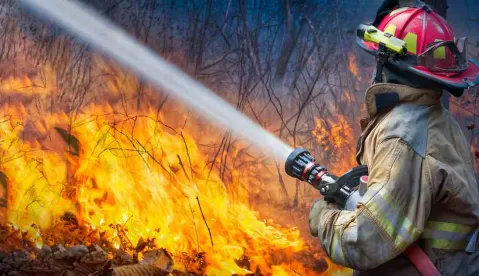The Maui wildfires are now the deadliest—and certainly among the most destructive—in modern US history, already outpacing the loss of life and impact on critical wildlife habitat/species of the 2018 Camp fire in California. Businesses have suffered corresponding devastation as well, particularly in the tourism and hospitality sectors.1 Insurance can and should play a vital role in the rebuilding effort. But it is crucial that policyholders handle their insurance claims prudently, understanding their potential insurance rights and obligations to maximize insurance recoveries.
Affected businesses may have a variety of first-party commercial insurance policies upon which they may rely for rebuilding and repair of damaged structures or vessels, debris removal, lost production, increased costs of code compliance, business income, extra expenses incurred as a result of the wildfire’s impact, and potentially lost income as a result of damage to suppliers and customer locations. In addition to standard first-party property policies, businesses may look to coverage under inland marine, cargo, marine/vessel, builder’s risk, or throughput insurance or other policies. They also may have coverage for losses resulting from damage to “attraction or leader properties”—dependent locations to businesses that draw in their customers. There also may be coverage that protects businesses that are not themselves located in Maui, but that rely on Maui businesses as key suppliers or customers. There may also be a need for policyholders to repurchase/renew various limits of their insurance that are exhausted during the policy period as a result of the claims process.
The Maui wildfires are certain to give rise to a variety of unique coverage issues, which will depend on each policyholder’s particular circumstances and policy wordings. The following checklist provides a general overview of selected issues that may be relevant to such claims.
IDENTIFYING POSSIBLE COVERAGE
The linchpin responsive coverage for commercial enterprises is first-party coverage insuring business assets and locations. While standard insurance forms exist for commercial coverage, some insurers have tailored property policies with manuscript wordings to meet a policyholder’s particular risk scenarios. Evaluation of the specific insuring clauses, enhancements, extensions and endorsements by reference to relevant law is critical. For example, Hawaii has a body of pro-policyholder law developed over decades by the courts and reinforced in its statutes to guard against delays and other tactics that have been deployed in similar wide area losses.
Businesses may have first-party coverage that includes the following specific elements:
-
“Property damage” coverage for physical damage or complete destruction of any property resulting from fire or another insured peril that may be classified as “insured property” under the policy, including buildings and other appurtenant structures, equipment, supplies, and other personal and business property.
-
“All risks” wordings that are intended to encompass any peril that is not specifically excluded elsewhere in the policy language.
-
“Builders risk” coverage for losses related to damage while a property is under construction.
-
“Business interruption” coverage, which generally reimburses the insured’s loss of earnings or revenue resulting from property damage caused by an insured peril but often leads to significant disputes regarding the proper measurement of loss.
-
“Contingent business interruption” coverage, which generally indemnifies the insured with respect to losses, including lost earnings or revenue as a result of damage to property of a supplier, or a customer’s inability to accept the business’s services or goods—even where the insured’s own property is not physically damaged, and even where the insured’s business is located outside of the affected geographic area.
-
“Attraction or leader property” coverage, which is a subcategory of contingent business interruption coverage that is triggered where an insured business—such as a hotel or restaurant—suffers loss of income as a result of damage to a designated “attraction property,” such as a nearby sports venue, theme park, historical attraction, or convention center.
-
“Extra expense” coverage, which generally covers the insured for certain extra expenses beyond normal operations incurred by the insured as a result of an insured event—e.g., fire damage to the insured’s property or to a contingent business interruption property—and in order to resume normal operations and mitigate other losses.
-
“Ingress and egress” coverage, which generally covers the insured when access to a business premises or location within a certain distance of the insured’s location is blocked for a time.
-
“Civil authority” coverage, which generally covers the insured for losses arising from a lawful order of governmental authority (e.g. curfew) that fully or partly restricts normal business operations. Similar to contingent business interruption coverage, civil authority coverage may apply even when there is no damage to the insured’s property.
-
“Service interruption” coverage, which generally covers the insured for losses related to off-premises and incoming electric, telecommunications, water, sewer, or power supply interruption.
-
“Law and Ordinance” coverage for costs associated with demolition and reconstruction of a property to updated building code standards. Typically, this occurs when a historic or older property has been severely damaged by some other event and must be reconstructed. Building code changes may necessitate a complete demolition of the property and reconstruction according to the updated code.
-
“Debris Removal” coverage protects against the cost of cleaning up the ruins of insured property after a fire, flood, or windstorm.
-
“Advance payments” may be expressly required under the terms of a commercial property policy, even if the insured loss has been partially disputed by the insurance company. Such “payments on account” can be important to sustain rebuilding where an impacted business cannot afford a protracted adjustment period.
-
“Claim preparation” coverage, which generally covers the insured for the costs associated with compiling and certifying a claim for property damage or business interruption.
COMMON INSURER RESPONSES
In response to insurance claims resulting from such wildfires, insurers sometimes argue that coverage defenses or exclusions limit or restrict coverage for a business’s claims. Here are just a few defenses commonly raised by insurers in response to fire-related claims, particularly when faced with large claims over a wide area event:
-
There was no covered business interruption. Insurers sometimes argue that, despite a partial or complete shutdown of the business, sometimes arguing that a complete cessation of operations is necessary to support a claim. The insurer may also dispute the necessity or cause of the interruption. For example, the insurer may argue that at least some part of the interruption or reduction in an insured business was the result of an unrelated business decision by the company, or lawful order of government to prevent damage, or the consequence of an economic downturn, and was not caused directly by fire damage to insured property.
-
The claim is for losses beyond the allowed recovery period. Policies sometime include provisions specifying that it only covers loss of income and related expenses for a specified period of time after an insured event occurs. If the policy does not define that period, it may be tied to the time it would take your company, employing reasonable mitigation efforts, to resume normal business operations under the circumstances. In view of the magnitude of the wildfires and the number of properties affected, the length of time it will take to repair property and resume normal business operations may be longer than the length of time had the claim been from an isolated event affecting a single facility or on the mainland.
-
The claim is subject to a very large deductible that is peril based or faces other impediments to full and prompt payment. Many policies have percentage of values-based deductibles that are higher when losses are related to wind and named storm events instead of those related to typical brush fires. For example, there may be disputes about whether the fire was exacerbated by winds from named storm Dora.
-
Insurers sometimes reduce claim payables by reference to “reported values”-driven limitations like an occurrence limit of liability endorsements in a master policy, depending on the “schedule of values” provided by the business to the broker at renewal and whether the location was reported at all or is newly acquired, owned, or leased.
-
The claim proceeds can be impacted or delayed by additional insureds or loss payees who claim a share of the recovery through a mortgage lending, inventory financing, leasing, or factoring arrangement.
-
CLAIM PRESENTATION
Most policies include specific provisions and deadlines for noticing and presenting a claim. The manner and timeliness in which a claim is presented can have a significant impact upon recovery. This cannot be understated or the deadlines ignored. Policyholders should be proactive in assembling an insurance recovery team, including hiring forensic accountants and claim professionals, involving the broker, as well as insurance coverage counsel, to manage the process and protect applicable privileges in relation to the policyholder’s claim assessment process. At a minimum, a policyholder should consider the following common policy provisions:
-
Notice of Loss. Most policies require the insurer be notified as soon as practicable or within a specified number of days after circumstances that may lead to a claim. Given the damage to infrastructure in Maui, policyholders should seek to notify all potential insurers in writing by several different means and keep a record of the notice.
-
Sworn Proof of Loss. Property policies often require a notarized proof of loss under penalty of perjury summarizing the cause, amount, and extent of the damage or loss. The insurer may require this proof of loss within a specified timeframe; though, it is not uncommon for insurers to agree to extend this deadline. Given these exigent circumstances, an affected policyholder should consider requesting a written agreement extending the time for submission of a proof of loss (and potentially other policy conditions) depending on the nature of the loss.
-
Suit Limitation. Policies may include contractual “suit limitation” provisions that shorten by agreement the timeframe for filing a lawsuit or commencing legal action and that bar tardy lawsuits. In some states, these provisions are not enforceable, while in other states, they are indeed enforceable and routinely enforced. Therefore, businesses should seek advice of counsel to determine any limitations period that may be applicable to their claim.
CONCLUSION
Businesses suffering Maui wildfire losses should not overlook the significant financial protection their insurance policies may provide. Businesses that act prudently and proactively stand the greatest chance of maximizing coverage. Engaging experienced policyholder coverage counsel can provide vital help in claim assessment, claim advocacy in conjunction with broker teams, and, as necessary, litigation to maximize the policyholder’s potential insurance recovery.
FOOTNOTES
1 The fires burning in the west and southern portions of Maui, which razed the town of Lahaina, burned seagoing vessels moored at their docks, and scorched many historic landmarks in western Maui, will usher in a sea change to Hawaii’s vital tourism industry with forecasted long-term impacts on resort owners, vacation rental owners, golf course communities and related guest-focused hospitality, transportation, and leisure businesses. In addition to the tragic loss of at least 99 lives, Hawaii’s governor reported that more than 2,200 structures have been entirely destroyed. As the fire is brought under control, the economic impact of wide-area losses on an island like Maui is immense—rebuilding businesses will struggle to complete for scarce materials, labor, and governmental permission to initiate their critical rebuild or repair efforts.




 />i
/>i

